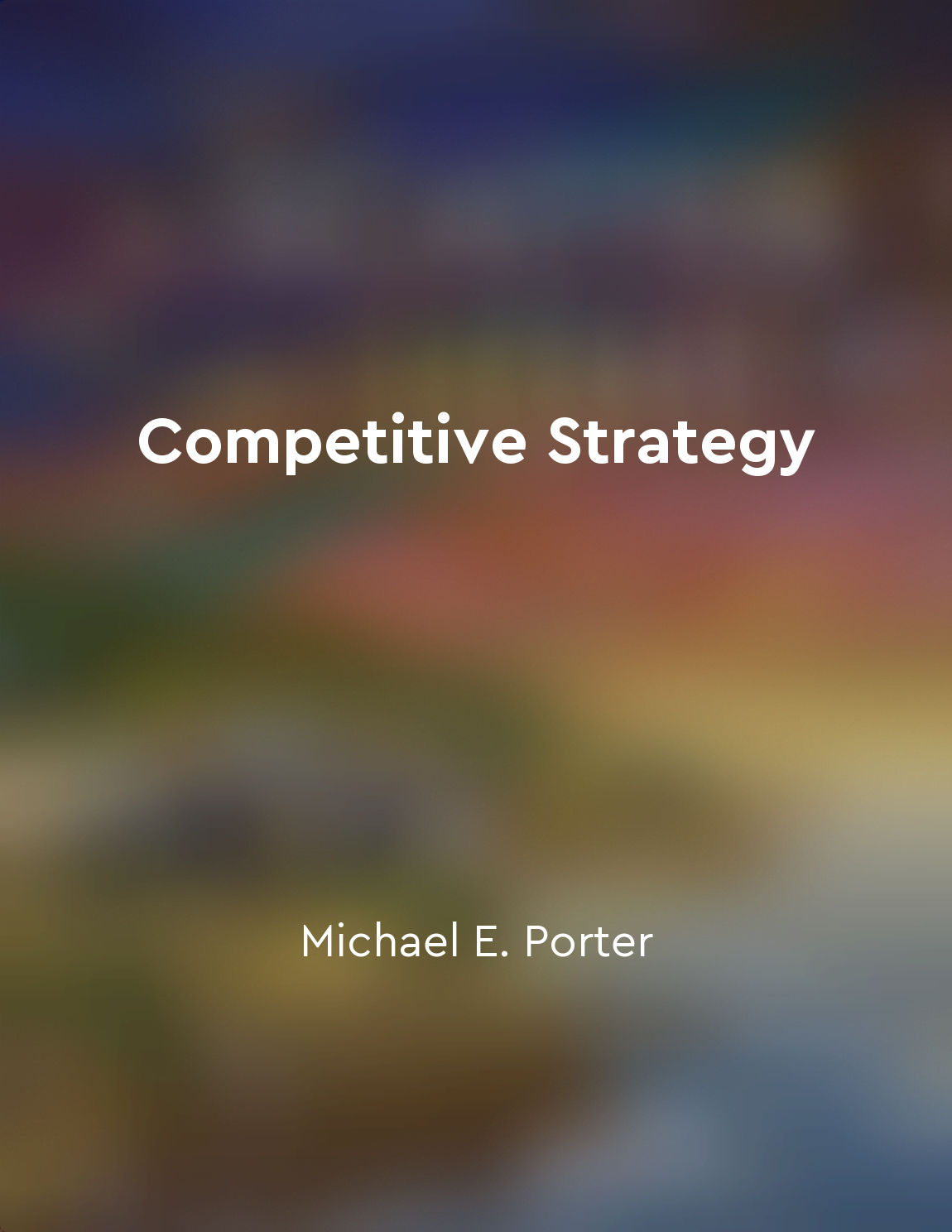Industry structure determines company profitability from "summary" of Competitive Strategy by Michael E. Porter
The structure of an industry is a powerful driver of a company's profitability. Different industries offer different levels of profit potential, and this potential is largely determined by the industry's underlying structure. In some industries, companies compete in a highly fragmented market, with numerous small players vying for market share. This fragmentation often leads to intense competition, as companies strive to differentiate themselves from their rivals. In such industries, profit margins are typically low, as companies are forced to cut prices in order to attract customers. On the other hand, some industries are dominated by a small number of large companies. These industries tend to be more profitable, as the dominant companies are able to exercise significant market power. They can set prices at a level that maximizes their profits, without fear of losing customers to competitors. In addition, dominant companies often benefit from economies of scale, which allow them to produce goods at a lower cost than their smaller rivals. This cost advantage further enhances their profitability. The competitive forces within an industry also play a crucial role in determining company profitability. Porter identifies five key forces that shape industry competition: the threat of new entrants, the bargaining power of suppliers, the bargaining power of buyers, the threat of substitute products or services, and the intensity of competitive rivalry. Industries with high barriers to entry, such as the airline industry or the telecommunications industry, tend to be more profitable, as existing companies are shielded from new competition. Furthermore, industries where suppliers or buyers hold significant power can also be more profitable, as companies are forced to accept less favorable terms in order to secure key resources or customers. Finally, industries facing intense competitive rivalry, such as the grocery or retail industry, tend to have lower profit margins, as companies are forced to compete on price in order to attract customers.- Companies do not exist in isolation; they are part of a larger industry structure that shapes their profitability. Understanding the dynamics of the industry in which a company operates is crucial for developing a successful competitive strategy. By analyzing the key forces at play within an industry, companies can identify opportunities for profit growth and implement strategies to outperform their rivals.
Similar Posts
Don't be influenced by shortterm market noise
The prudent investor needs to have a clear understanding of the difference between what is important in the long run and what i...
Specialization leads to increased productivity
When individuals or businesses specialize in what they do best, they can produce more output with the same amount of resources....
Value propositions are at the core of any business model
At the heart of every successful business model lies a compelling value proposition. This is the unique offering that a company...
Innovation drives productivity gains and economic growth
The fundamental idea that underpins the relationship between innovation and economic growth is the concept of productivity gain...

Look for patterns and trends to identify areas of focus
The key to unlocking the power of the 80/20 Principle lies in the ability to discern patterns and trends. By carefully observin...
Keep emotions in check when investing
Investing can be an emotional roller coaster. When prices are rising, it's easy to feel excited and optimistic. When prices are...
Continuously reassess and adjust your strategy as needed
To win in business, you must continuously reassess and adjust your strategy as needed. This means staying vigilant and aware of...
Production decisions guided by corporate planning
The modern industrial system is characterized by a complex interplay of forces that influence the decisions made by corporation...

Monopolies harm consumers
Monopolies, by their very nature, restrict competition and limit consumer choice. When a single company dominates a particular ...

Do your research before investing
Investing requires thorough research to make informed decisions. As an investor, you must analyze the company's financial state...


